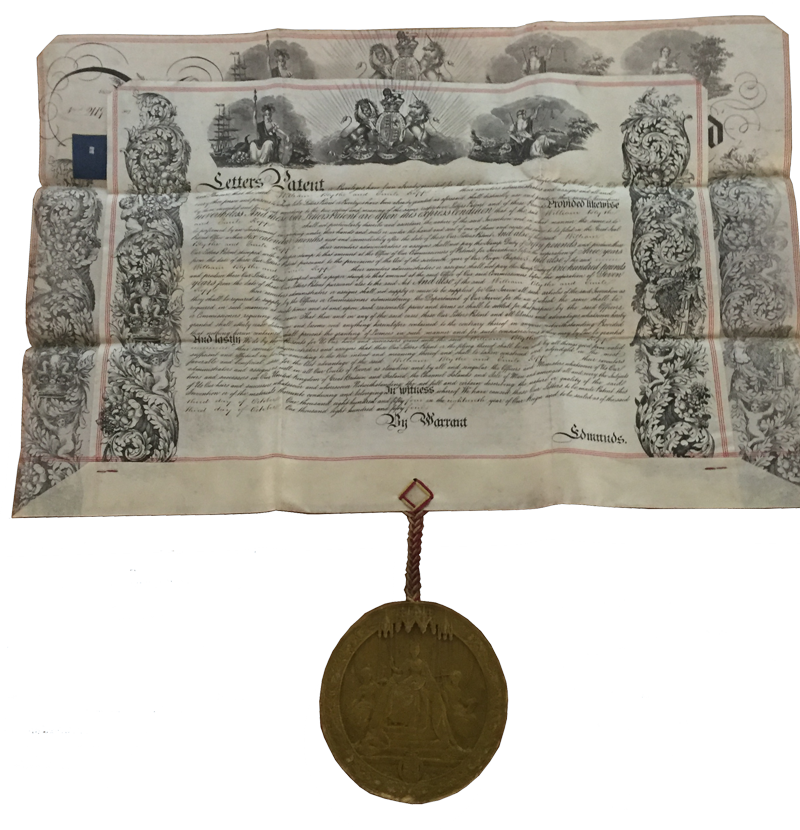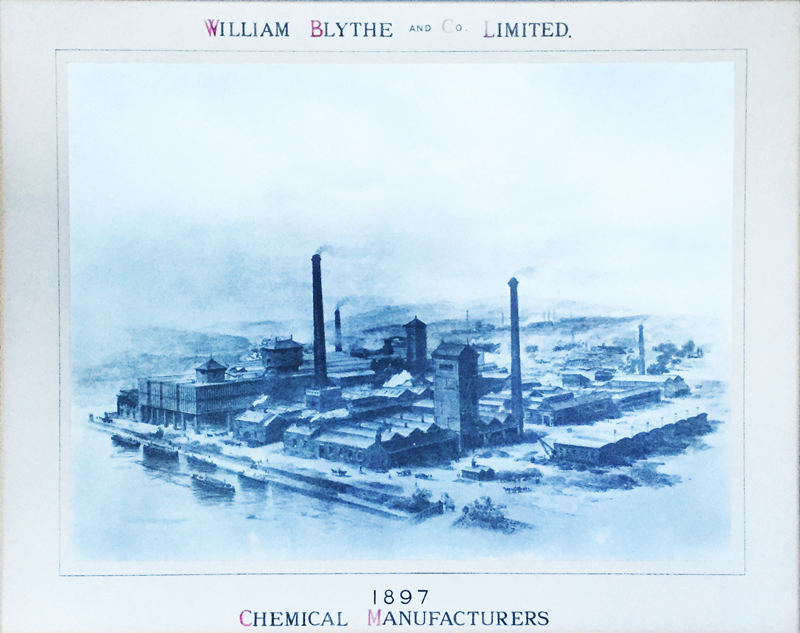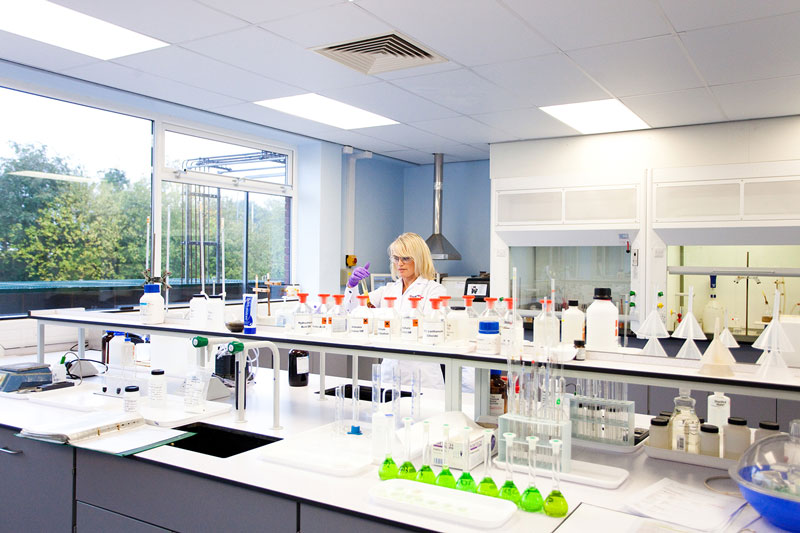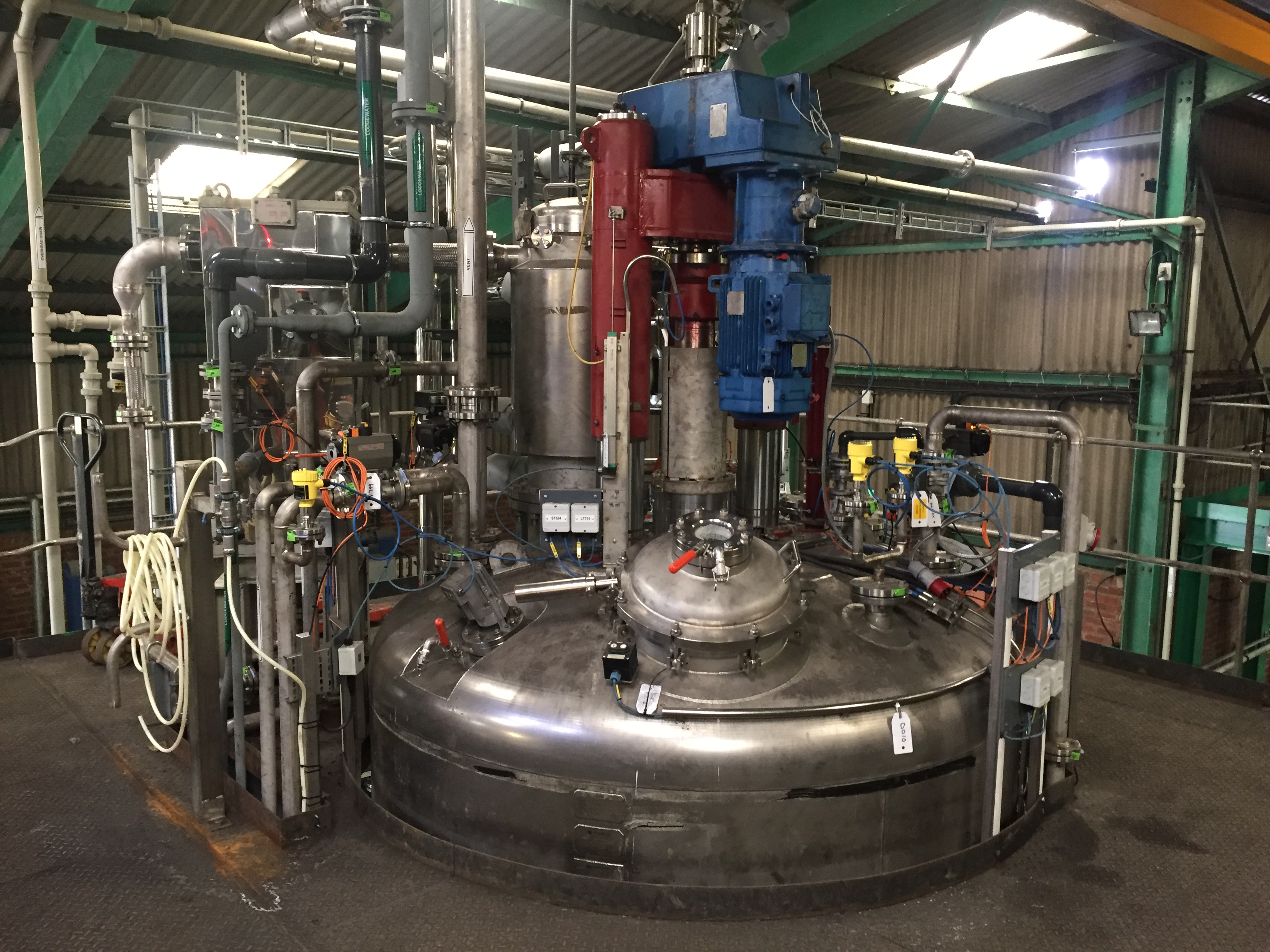William Blythe Ltd, founded in 1845 in Accrington, Lancashire is one of the longest surviving chemical businesses in the UK. Wm. Blythe Ltd started as a manufacturer of inorganic chemicals for the local textile industry, producing several products, including zinc sulphate for use in the production of Rayon and zinc chloride for use in batteries and for the dissolution of cellulose. By the turn of the century William Blythe was also manufacturing picric acid for use in the local dyestuffs industry. William Blythe’s business was founded on the manufacture of inorganic chemicals and over 170 years on the business manufactures exclusively inorganic chemicals based on a range of different elements with product applications as diverse as catalysis, semi-conductor manufacture, high speed printing and fire retarding polymers.
-
1845
William Blythe Ltd was founded in Church, Lancashire and named for its owner.
-
1854
First William Blythe patent filed.

-
1854
The first William Blythe patent was filed. It was granted for the development of a novel manufacturing route for sulfuric acid
-
1892
William Blythe & Co. Ltd was established with William Blythe's sons, William Steward Blythe and Frederick Charles Blythe, as Directors

-
1900’s
By the turn of the century William Blythe were selling to many countries, including India, South Africa and in the Americas. An office in London and agencies in several of their most important overseas markets supported these sales activities.
-
1919
William Blythe acquired the business of John Riley & Sons, a manufacturer of a similar range of acids and metal salts to William Blythe, plus alkali hydroxides and carbonates. At the turn of the century the Hapton Works of John Riley & Sons was the largest chemical works in Lancashire.
-
1920’s
Taking over from William Blythe’s grandson William Fernley Blythe, William Collison became the first Managing Director of William Blythe who was not a member of the Blythe family. He remained in this post until the mid-1950’s – a remarkable period of service.
-
1928
William Blythe became a public company.
-
1955
Construction of a new plant to make Sodium Sulphate and Hydrochloric Acid from Sodium Chloride and Sulphuric Acid using two state of the art oil fired Mannheim Furnaces
-
1957
Construction of a 50 T per day Sulphuric Acid Plant. Acid from this plant was sold throughout the North West and had an excellent reputation for of its exceptional purity.
-
1960’s
recognising that there was little external process engineering expertise in the manufacture of many of William Blythe’s more specialised metal salts, the company started to build their own in-house process engineering capability – recruiting young chemical engineers who had trained in some of the UK’s premier Chemical Engineering Schools
-
1960’s
William Blythe started to develop in-house expertise in corrosion resistance and use of plastics and reactive metals such as Titanium, Zirconium and Tantalum. The interest in glass reinforced plastics lead to the development of in-house capability in the manufacture of GRP tanks including spirally wound tanks, whose manufacture was pioneered by William Blythe in the UK. Recognising that this was not a core business, the capability to manufacture large GRP storage tanks and process vessels was sold on.
-
1969
William Blythe was acquired by Hickson & Welch (H & W) to safeguard the supply of Arsenical salts – notably Arsenic Acid, Sodium Arsenate and Sodium Arsenite which were key constituents of Hickson and Welch’s fast growing inorganic wood preservative business
-
1989
Development in association with Alcan of Flamtard H & S fire retardants and construction of a pilot scale manufacturing facility.
-
1990
Development of a process to produce Ammonium Thiosulphate Solution from Ammonium Bisulphite Solution, Liquid Sulphur and Aqua Ammonia thus eliminating the need to store and employ in process liquid Sulphur Dioxide and to handle solid Sulphur with the attendant risk of Sulphur fires: the novel process in addition to reducing process hazard also reduced costs and improved product quality.
-
1990
William Blythe was acquired by Holliday Chemicals Holdings (HCH) as a key part of their growth strategy which lead to significant investment in new products and plants.
-
1994
Development of a continuous process to produce Copper Carbonate for use in the timber treatment industry and catalyst industry
-
1995
Members of the Blythe family attended the 150th anniversary of the founding of the company
-
1996
Construction of a purpose designed Flamtard manufacturing facility. This has been subject to continuous improvement over the years to enable the production of material to an ever-tighter specification, meeting changing customer requirements.
-
1998
William Blythe became a wholly owned subsidiary of Synthomer (named Yule Catto at the time) as part of their strategy to become a major producer of speciality chemicals as well as latex based polymers.

-
2001
Development and commercialisation of a process to make high grade Periodic Acid to meet the requirements of the electronic industry
-
2005
William Blythe developed a means of employing Stannous Chloride Solution as a reductant in the cement industry, enabling cement manufacturers to meet the new legislative requirements for Chromium 6+ content whilst low cost commodity reductants were being developed for this application; an example of William Blythe’s ability to respond quickly to a change in the market.
-
2005
The copper carbonate plant was modified to produce copper zinc carbonate for use in the catalyst/gas purification industry. This work developed William Blythe’s skills in the manufacture of products with tightly defined physical attributes, understanding the process drivers which affected properties such as bulk density, pore structure, specific surface area etc.
-
2009
Construction of a novel process to manufacture sodium stannate solution feedstock, designed to eliminate the hazards associated with the conventional batch process
-
2013
winners of the Gold Standard Skills Award in recognition of the extensive training programme run at William Blythe over the preceding years
-
2013
William Blythe opens its new Analytical and R&D laboratories as the company focus shifts to new advanced materials development

-
2017
New multi-purpose production facility operational, designed as a flexible asset to bridge the gap between pilot plant scale material supply and the construction of dedicated production facilities.

-
2018
The new hydrothermal synthesis plant will be commissioned.
Contact us today for more information on any aspect of William Blythe.